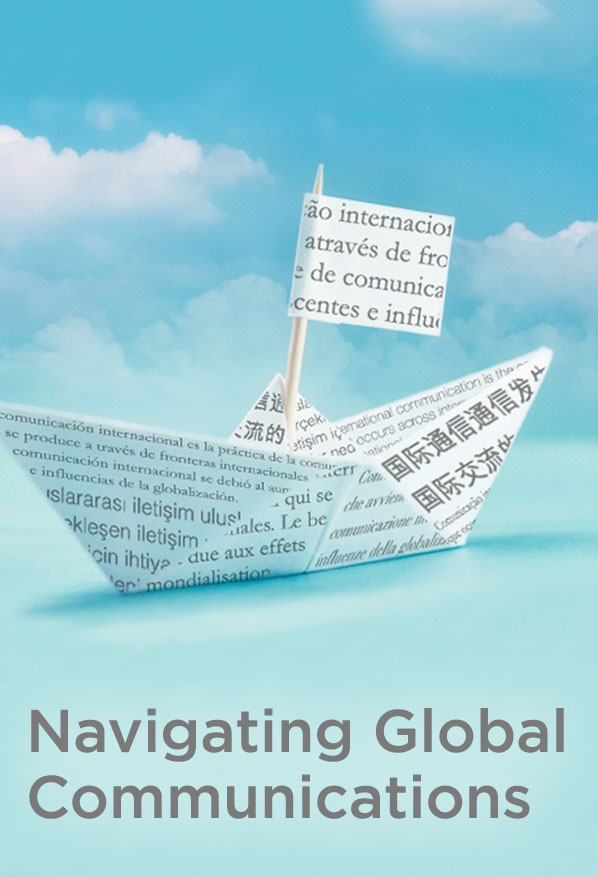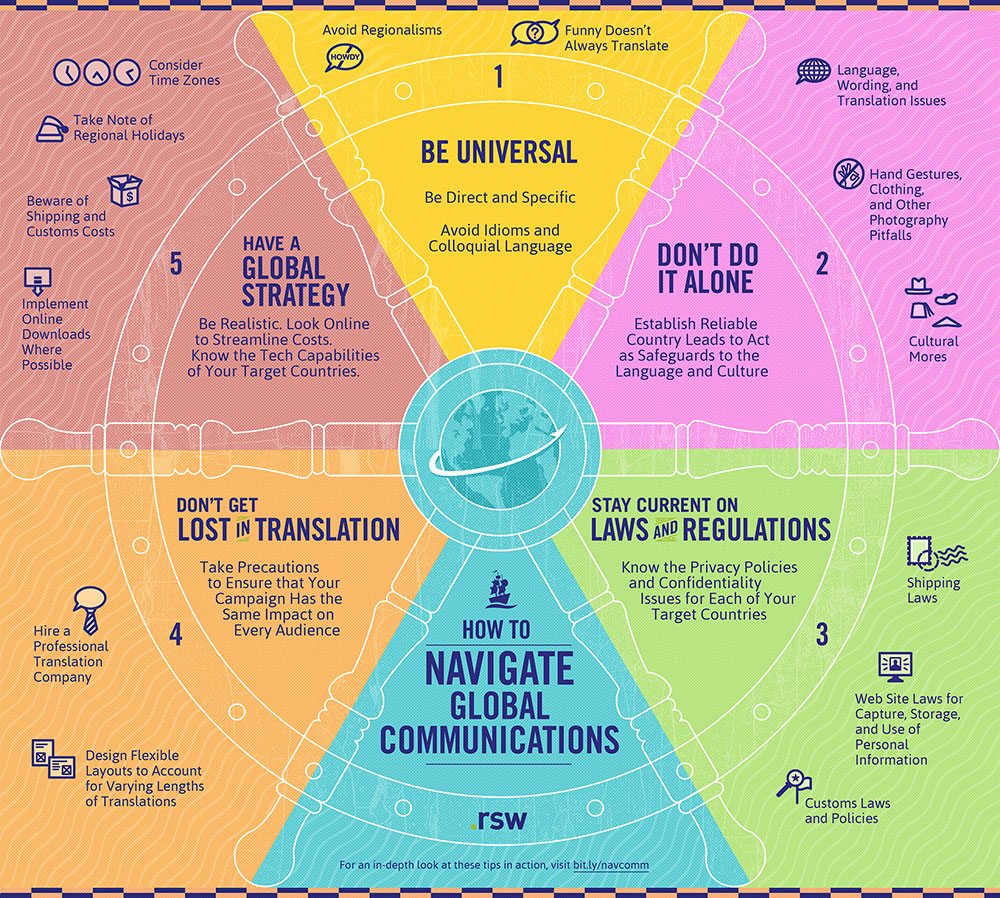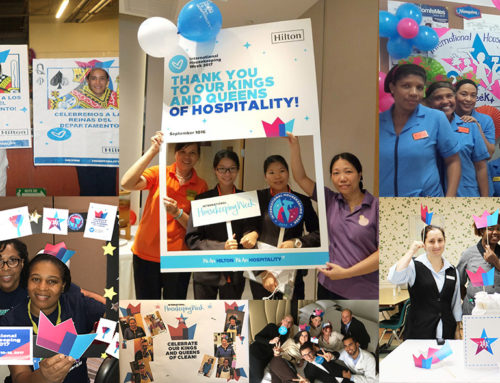
There’s a big learning curve when it comes to global communications. As your audience expands, so does the number of variables you need to keep in mind.
After years of experience creating and launching global campaigns for Hilton Worldwide, HP, and more, we’ve learned a thing or two about effectively communicating with a worldwide audience. Here are some tips to keep in mind:
1. Be Universal. You want a universal message that engages the widest audience without being generic or diluted. Think about famous universal taglines. Nike’s “Just Do It” has been internationally recognized since the 1980s. De Beers’ “A Diamond is Forever” made the diamond a symbol of authenticity and longevity for a variety of markets, including the U.S., China, Japan, and India. These lines are successful because they avoid idioms and regionalisms, and communicate an impactful message that retains its integrity even when translated for different cultures.
2. Don’t Do It Alone. Attention to detail and research on your target countries is important. You may even want to team up with a trusted contact or third party consultant in your target country. This person can check your campaign for inconsistencies and cultural and language issues. They should also alert you to potential problems, such as images with hand gestures, wording, or clothing that may be misinterpreted in that country.
3. Stay Current on Laws and Regulations. If you’re working on a global campaign, you and your team should be clear on laws, regulations, and privacy policies in your target countries. Countries carefully regulate what goes in and out of their borders. If you plan to ship materials, avoid issues by paying special attention to each country’s laws and policies related to customs and shipping, and know what you can and can’t send.
Confidentiality issues on internal campaigns, such as displaying full names and other information on websites and forums, are common. Many countries also enforce strict laws on how websites are allowed to capture, store, and use personal information.
4. Don’t Get Lost in Translation. You’re not just responsible for getting the words right. You’re responsible for ensuring the campaign has the same impact on every audience. Consult a professional translation company to check that your campaign retains its integrity. Skip this step, and you could end up like Pepsi, whose 1960s tagline “Come Alive! You’re in the Pepsi Generation!” translated for Chinese audiences to mean, “Pepsi Brings Your Ancestors Back From the Grave.”
If you’re designing a campaign for several languages, keep in mind that they’re usually different lengths. A message in Spanish takes about 20 percent more space than the same message in American English. Simplified Chinese tends to be compact.
5. Have a Global Strategy. To control costs, consider having some deliverables available online for download—just be aware of technological capabilities in your target countries. As you communicate to a wider audience, shipping and customs begin to play a much more significant role. Without planning, you run the risk of draining your budget on shipping items overseas and paying for customs.
Remember that one communication schedule doesn’t fit all. Schedule your webcasts, email blasts, meetings, and other events to accommodate time zone differences and regional holidays in your target countries.
Launching a global campaign takes time—and patience. Each experience is unique and teaches something new. By following these strategies, you’re sure to get ahead of the global communications learning curve.







Leave A Comment